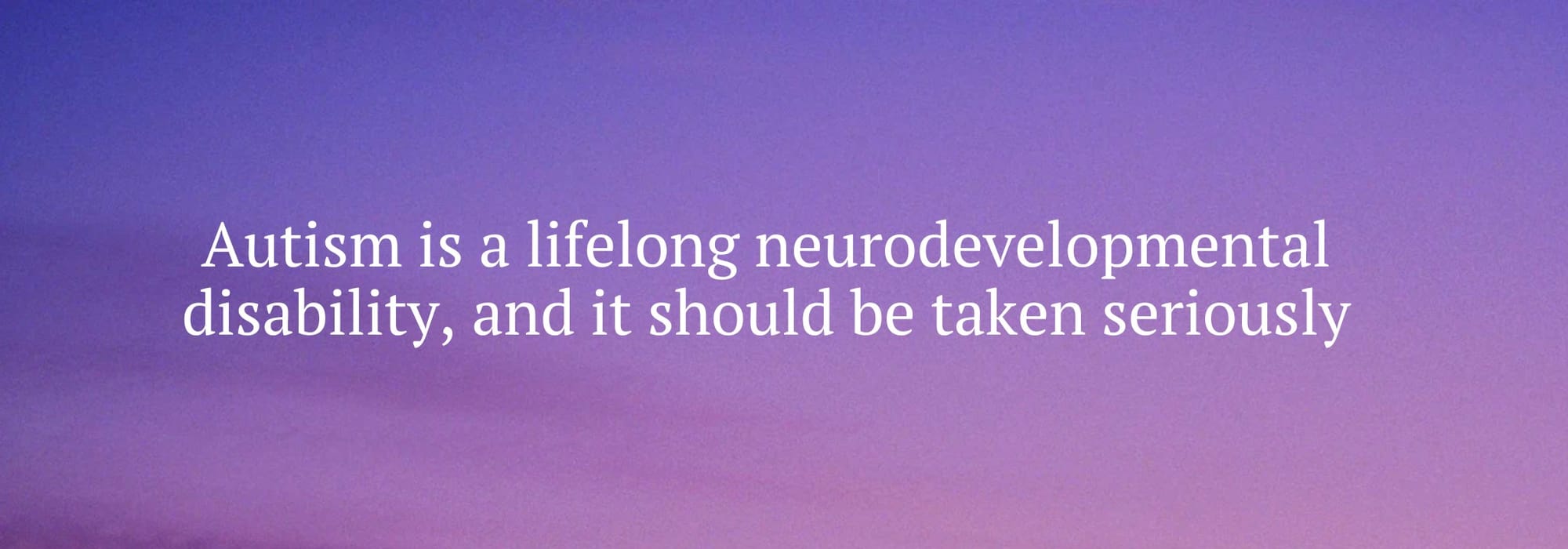From gendered diagnostic criteria to the idea that ‘everyone is a little autistic’, we’re debunking seven common myths about autism
For most of my life, I was aware that I was ‘different’. The world seemed too loud, every single garment of clothing was (and still is) itchy, and the lights in any room were painful.
‘She’s not like other girls’ is taken as a pejorative sentence these days, but it was bandied about readily, stuck to me by adults who thought I was ‘hysterical’, ‘too sensitive’, or believed I needed to ‘blend in’. Never mind how gendered this was (you would never label a man’s distress as a product of hysteria), it was a perception that stayed with me for a long time.
One month shy of turning 16, I was finally diagnosed as autistic. It explained a lot of what I was missing; a word that explained what had felt like a faulty brain and body that had been an issue all of my life. However, diagnosis is not the final part of the story, because there are still misconceptions about autism that remain. So let’s bust a few myths…
1. Autism is a male condition
Spoiler: women, and any other gender, can be autistic. The original diagnostic criteria for what was then called Asperger’s syndrome was based on a group of young boys, from the 1940s. The diagnostic criteria gained more worldwide prominence around the 1980s, however, it was still heavily gendered (and arguably sexist.)
Those dated assumptions remain today, such as the belief that you have to be intensely interested in ‘male’ topics, like trains or dinosaurs. The diagnostic criteria can still be gendered and can struggle to pick up women and girls – who tend to also be better at ‘masking’ (more on that in a moment). But, gender does not make the diagnosis; women can be autistic, too.

2. Autism is a ‘superpower’
If you Google autism, or just scroll through your social media, you are probably going to see references to having it being like having a ‘superpower’. While individuals have their own preferences as to how they describe themselves, and how they identify, we are human beings, not superheroes!
It may mean that we have positive attributes, such as when it comes to being able to focus on specific subjects for hours, and memory retention, but autism is a lifelong neurodevelopmental disability, and it should be taken seriously.
3. More people are autistic these days
There has been some speculation about ‘a surge in diagnosis demand’, with the suggestion that this has been powered by social media platforms like TikTok. But the population is not suddenly ‘becoming’ autistic – that is medically impossible for a start.
We have failed to pick up on the prevalence of autism in the population for a long time, in part because of the flawed diagnostic criteria which are heavily gendered, as well as social stigma. People are not ‘becoming autistic’ or ‘making autism their personality’ from using TikTok, instead, it’s more likely that this accessible content leads to a moment of recognition – an ‘ah ha’ moment that is playing out in the internet age.
4. You can just try not to be autistic
Thanks to the Equality Act, we have a definition of what is and is not a disability in law. Autism is name-checked in the law as an example of disability. Whenever anyone has asked what my lived experience is like, this is often met with, “Could you try to...”
As part of my diagnosis I ‘mask’. Masking is a typical hallmark, and it means to ‘become’ neurotypical by working to suppress my needs and behaviours, often through the use of mirroring (the act of copying the actions, speech patterns, or behaviours of others). This has a huge impact on the individual, and often contributes to poor mental health.
Masking is a trait specific to autistic people, and it is not about wanting to be liked. It’s also not a long-term solution. To suggest I ‘just try’ to step outside my neurology is beyond invalidating, essentially the equivalent of saying to a wheelchair user: ‘Can’t you just walk?’
5. Everyone’s a little bit autistic
This is as medically inaccurate as it is invalidating. To be diagnosed as autistic, you have to have a range of the diagnostic traits that impact multiple functions of your day-to-day life. Autism is a spectrum, which means that everybody with autism is different – and some autistic people need more support than others. But you either are autistic or you are not, you cannot be a ‘little bit autistic’. I have often had people tell me this, as they identify with one characteristic, often: ‘I am over-zealously tidy, therefore I must be autistic.’ This is reductive and lacks nuance.
6. Autistic people should adapt themselves to the ‘real world’
Autistic individuals have sensory needs – or, in other words, access needs that are non-negotiable, the same as those with physical disabilities.
In order to access certain spaces, we also need some help along the way – examples include using ear defenders if we have hypersensitivity issues, or dimming the lights. The Equality Act means that such reasonable adjustments in workplaces are a legal right. So rather than us adapting to the ‘real world’, the ‘real world’ should make reasonable adjustments for us.
The National Autism Society. Find plenty of resources, advice, and guidance on autism – as well as read stories from people with ASD (autism.org.uk).
Autism Education Trust. For parents and teachers alike, the Autism Education Trust offers guides for supporting autistic children through these formative years (autismeducationtrust.org.uk).
Autism Plus. This organisation offers support for neurodivergent people in the workplace, as well as training for employers (autismplus-employmentservices.co.uk).


Comments